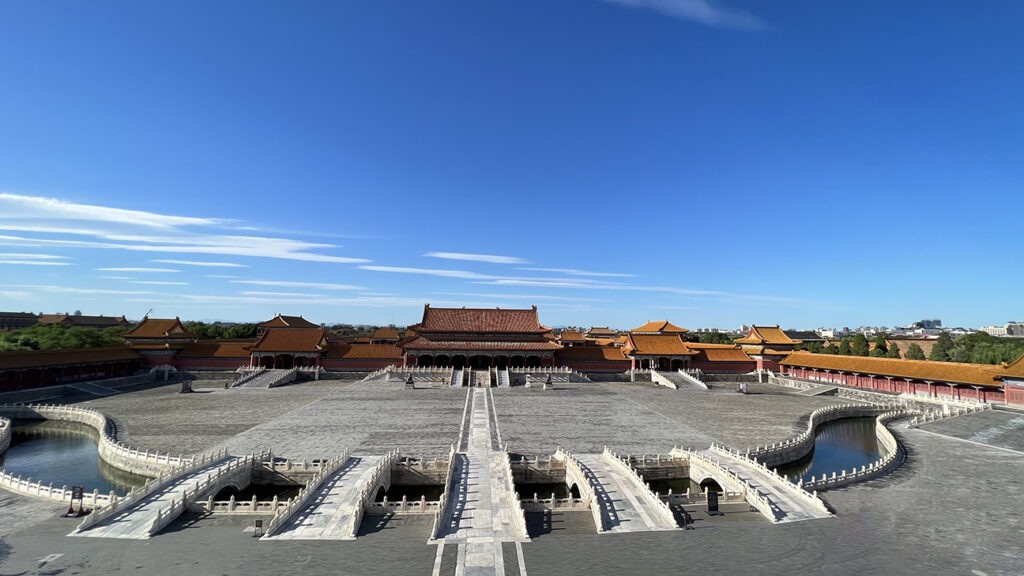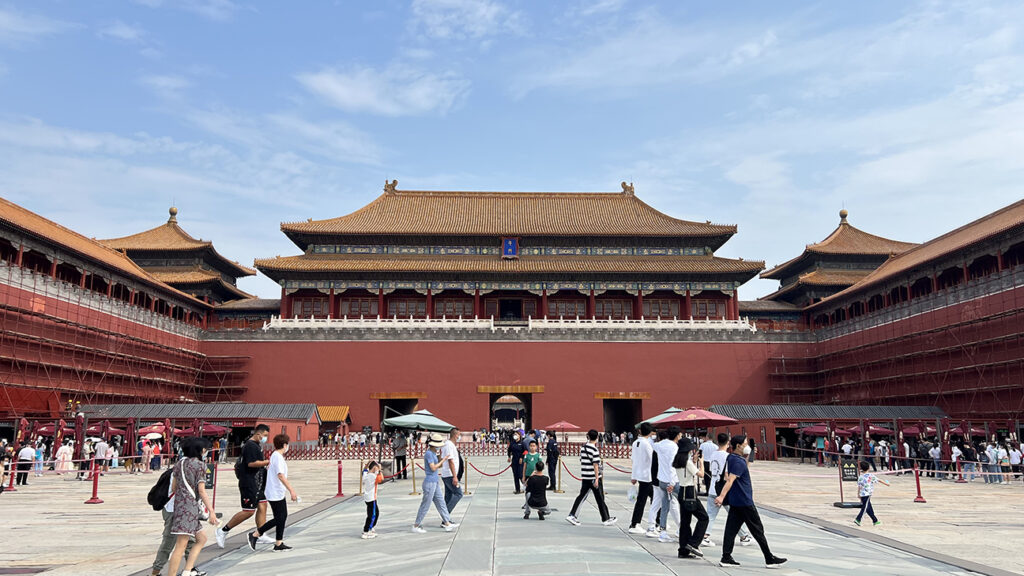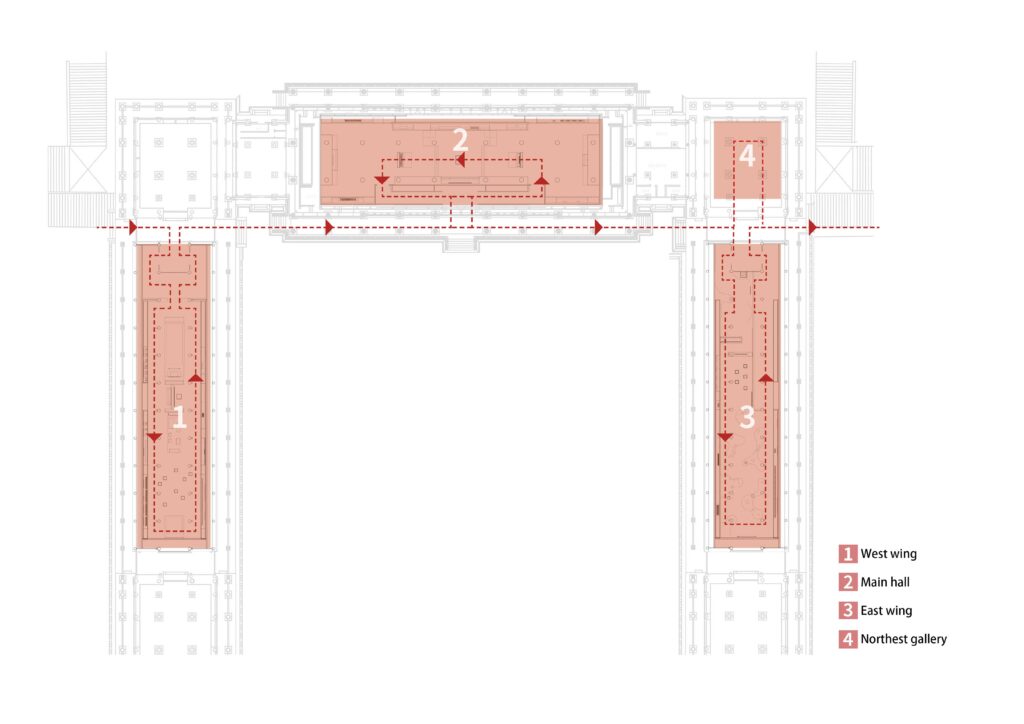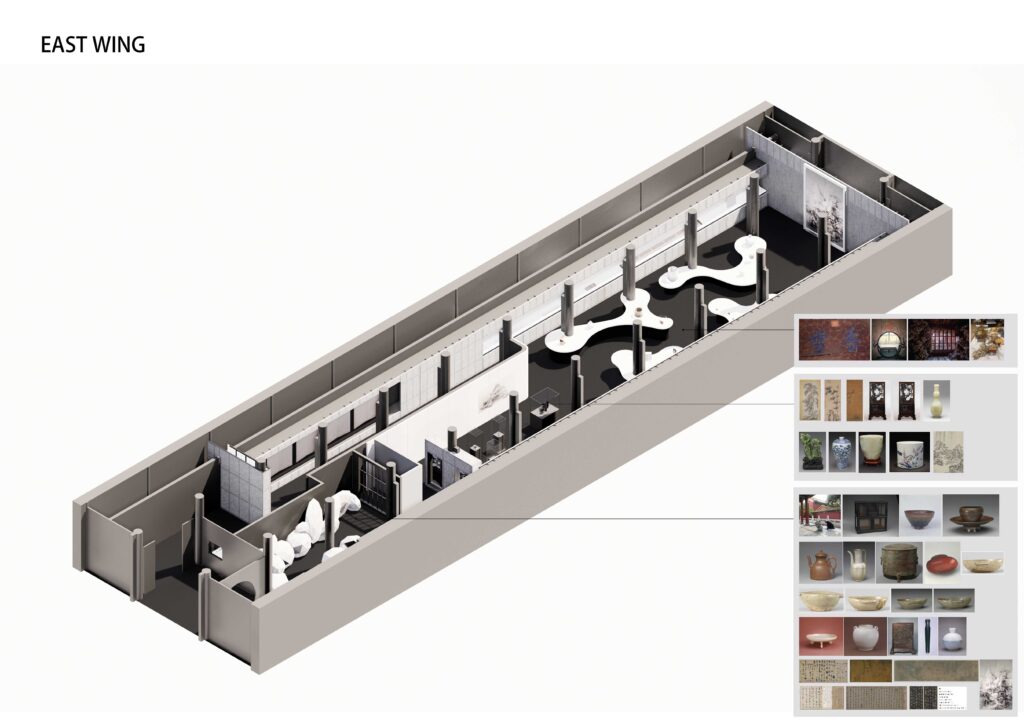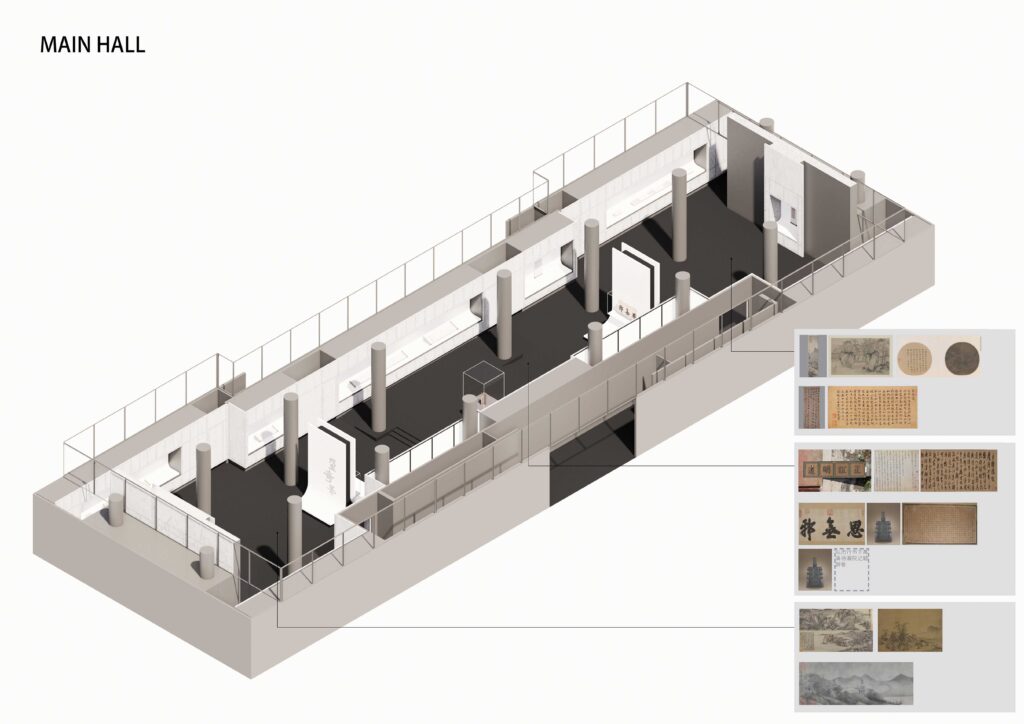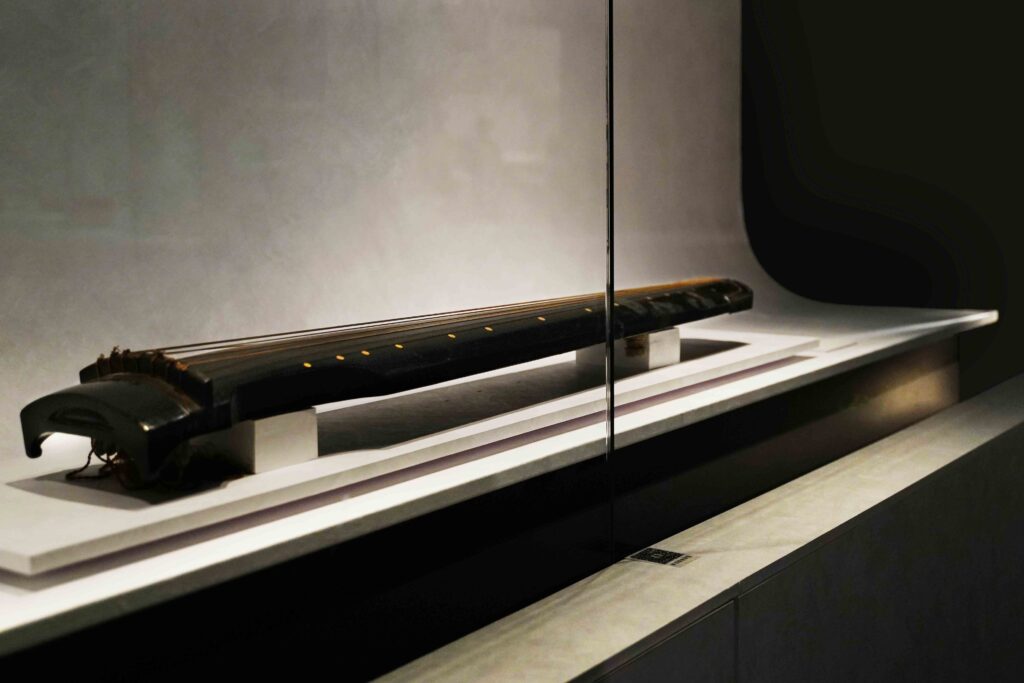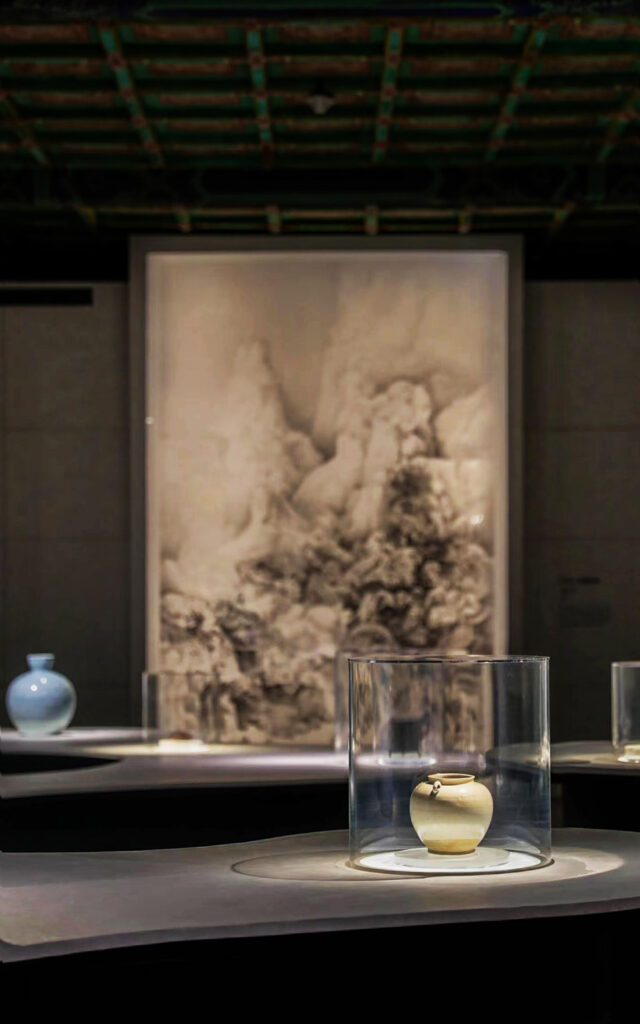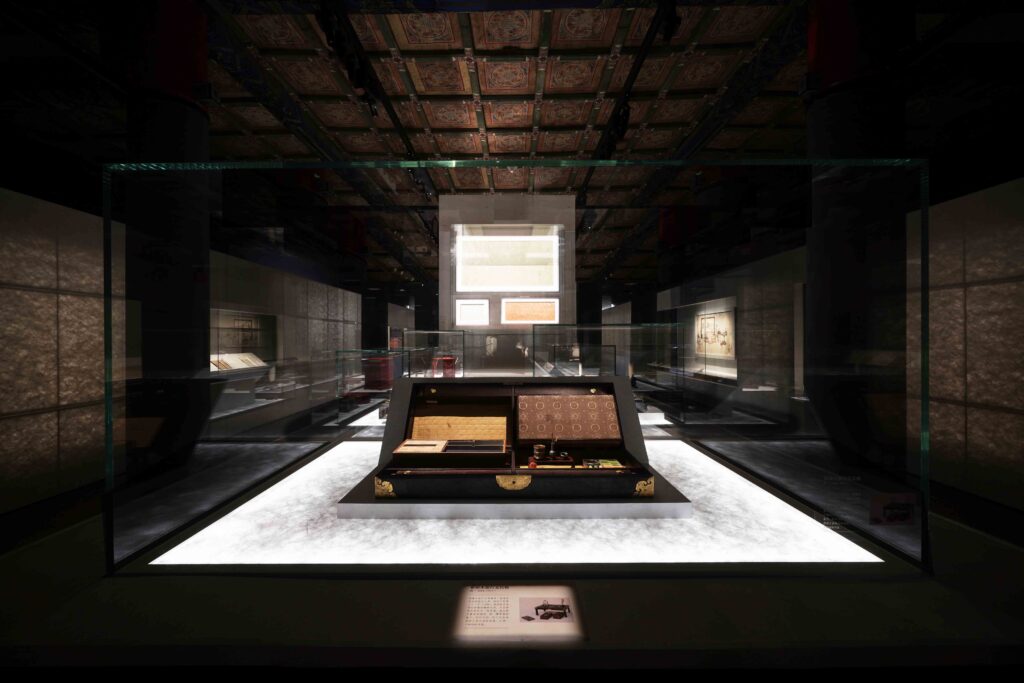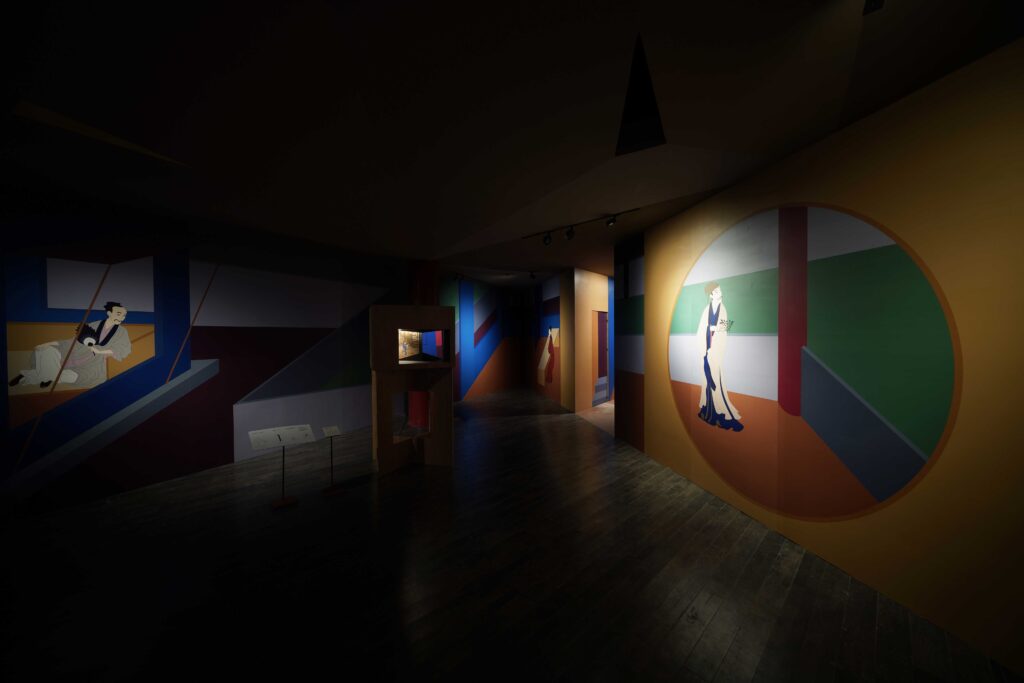Design: 2022
Construction: 2022
Beijing, China (Fall, 2022) – Mirroring the Heart of Heaven and Earth:
Ideals and Images in the Chinese Study, an exhibition designed by New York-based firm OLI Architecture, has opened in the Palace Museum. Located in the center of the 72-hectare complex in the Forbidden City, built in the fifteenth century, the museum houses one of the world’s largest collections of ancient Chinese artifacts, calligraphy, paintings, and porcelain. Working closely with curators at The Palace Museum, OLI Architecture has created a space that brings together art and objects spanning from antiquity to contemporary art within the historical architecture.

Housed in the Meridian Gate Galleries, Mirroring the Heart of Heaven and Earth centers on the evolving role of the scholar throughout Chinese history, exploring the relationship to the court, to other scholars, the natural world, and the universe. The exhibition brings together a hundred and six works ranging from antiquities to contemporary art, including books, scrolls, vases, sculptures, paintings, screens, cups, and seals. Alongside the art, the displays also include materials such as brushes, ink, and paper ranging from the 6th to the 21st centuries. The three gallery wings are divided into three chapters titled “Chapter One: Sanctuary of Literature and Music,” “Chapter Two: A Channel for Enlightenment,” and “Chapter Three: A Bond of Companionship.” With themes respectively around a spiritual haven, self-cultivation and the bond between humanity and nature and the appreciation of the finitude of life against the infinity of the universe.

The exhibition encourages a dialogue between heritage objects and modern artworks. For instance, a plaque bearing the words ‘Chamber of the Five Classics’ in the Qianlong Emperor’s hand that typically hangs in an annex hall to the east of the Palace of Heavenly Purity, which served as the imperial study is prominently displayed in the west wing at the beginning of the exhibition. The Five Classics include some of the oldest surviving Chinese texts and are the central works of Confucianism.

Founding Partner Hiroshi Okamoto remarks, “Our office often works with contemporary art and artists. It was a challenge to design this remarkable exhibition with pieces from famous contemporary artists paired with such rare and prominent antiquities. When we started the project the idea of the scroll and the ephemerality of paper became a central concept.
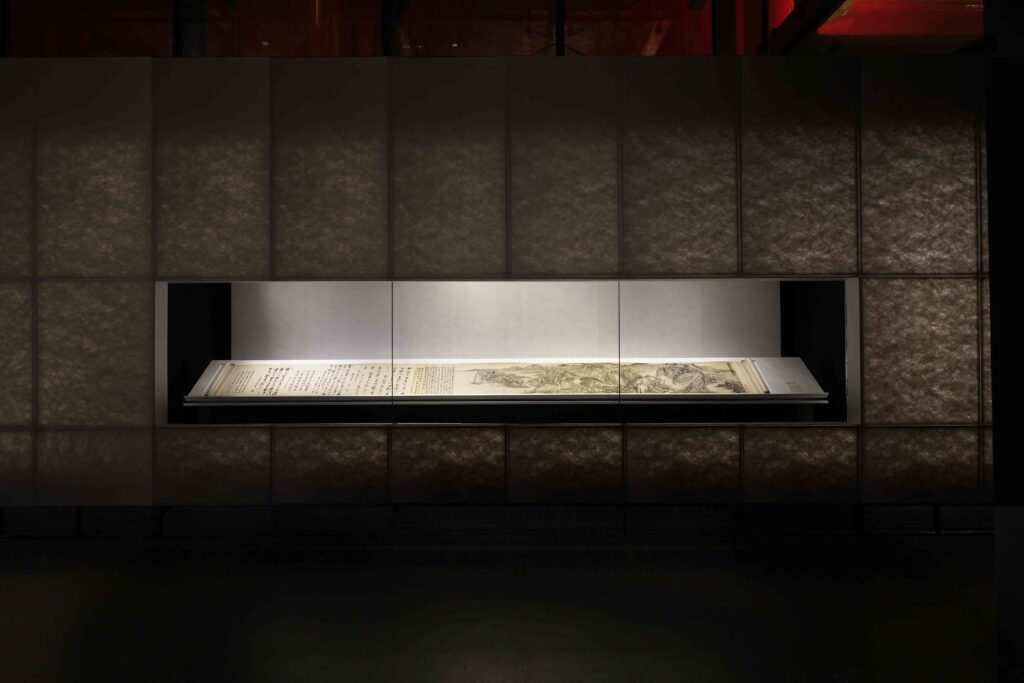
Contemporary artists represented include:
– Liu Dan (b. 1953) an ink painter trained in traditional style ink painting, he lives and works in Beijing, China.
– Xu Bing (b. 1955) is a multi-media artist known for his calligraphy and printmaking, who divides his time between New York City and Beijing.
– Xu Lei (b. 1963) an ink painter heavily involved in China’s 1980’s New Wave movement who currently serves as the Art Director of Beijing’s Today Art Museum.
– Bai Ming (b. 1965) a ceramicist and painter who teaches at Tsinghua University in Beijing.
– Young Ho Chang (b. 1956) an award-winning architect and researcher who is currently a professor of architecture at MIT.
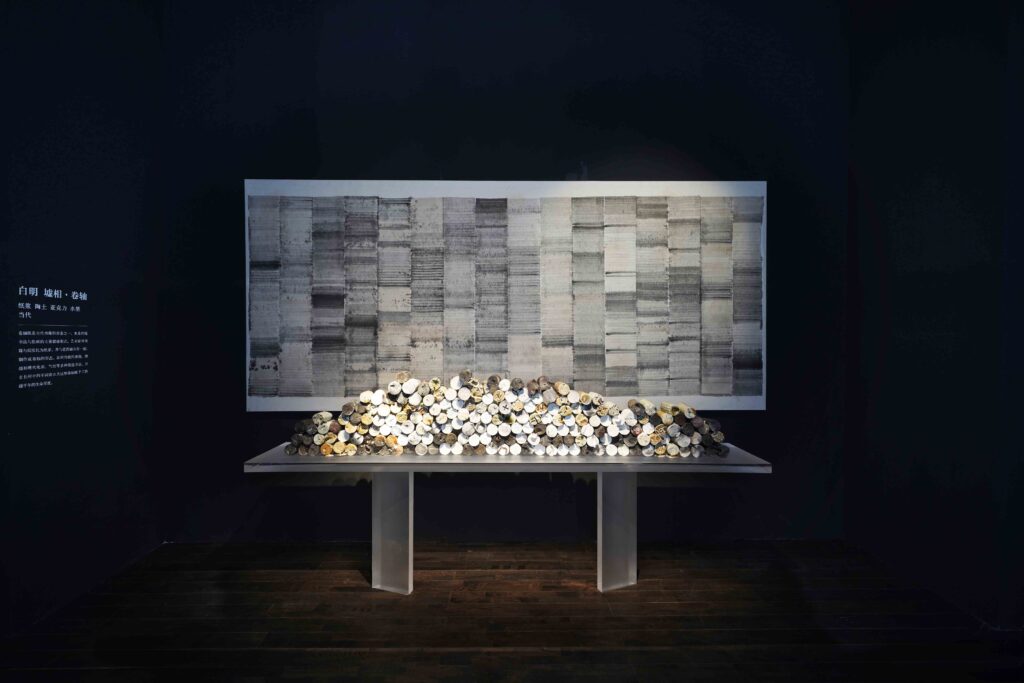
Project Gallery
